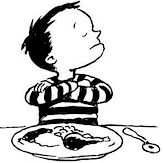Doctors’ Notes
BackPicky Eaters
Do you find yourself persistently preparing foods in an attempt to “trick” your preschooler’s palate?
Do you dread meal times because you’re tired of playing food games and offering bribes for your toddler to eat his vegetables? Or how about this — are you planning, for the third time this week, a dinner of pizza, chicken tenders, or mac ‘n cheese? (Sigh) The things we do to try to satisfy our children’s taste buds and fill their bellies!
What if My Child Isn’t “Getting Enough”?
All joking aside, having a child who’s a selective eater can be exceedingly frustrating and stressful for parents, especially if you’re concerned about your child “getting enough.” Rest assured, though, that this is nerve-racking for us (parents), it’s not a bit taxing for our youngones. Unless, of course, we make it that way. You can also rest assured that food selectivity during the toddler and preschool years is quite normal. If your child is growing and developing normally, it’s most likely that his or her needs are being met. It’s also important to note that young children have an innate ability to self-regulate their food intake. They know when they’re hungry, and they know when they’ve had enough to eat.
 If you don’t remember any other piece of information from this article, remember this:
If you don’t remember any other piece of information from this article, remember this:
As parents, it’s our responsibility to decide when to eat and what to serve. It’s our children’s responsibility to decide how much (if anything) they want to eat.
If you remember a second thing, remember this:
Recommended serving sizes for small children are small. Your child’s fist, or the size of his or her palm, provides a good estimate of an appropriate portion size. You can also go by the one-tablespoon-per-year-of-age rule (i.e., 2 years old = 2 tablespoons of peas).
Here are a few more tips you may find helpful:
Avoid Bribery
Do not, I repeat, do not bribe or pressure your children to eat their vegetables by offering them dessert as a reward. This only teaches them that dessert holds greater value than vegetables. Research also shows that bribing kids to eat healthy foods does not promote healthy food preferences.
Give Up the Food Struggle
No doubt, this is much easier said than done, but give it your best shot. When eating becomes a source of conflict, your child may develop a negative attitude toward food. Instead, allow your child to control his food intake. When you see him demonstrate a positive eating behavior, let him know that you like it.
Create a Relaxed Eating Environment
Keep the conversation positive and try to set a few ground rules, such as no toys or television during mealtimes.
Get Your Child Involved
The more that children are involved in choosing and preparing food, the more likely they will be to eat it. Take your child shopping with you and encourage her to pick a vegetable to try for dinner. Allow your child to help in the kitchen — even small children can help give you ingredients and arrange food on a serving plate.
Offer New Foods Alongside Familiar Ones
At each meal, offer small amounts of one or two foods that you know your child will eat. Take the opportunity to offer new items along with them.
Try, Try, & Try Again
If your child won’t eat something one day, it doesn’t mean he will never eat it. Continue offering it without pressuring him to eat it.
Present Fruits & Veggies in Different Ways
Your child might not eat a whole apple, but will eat a sliced apple.
Encourage Kids to “Eat Your Colors”
This works well with younger children. Encourage your child to try as many different colors on her plate as possible. Eating a variety of brightly colored foods provides more nutrients.
Avoid Playing Food Games
Your child may enjoy the attention, but still won’t eat. And you probably won’t enjoy your meal either.
Be a Healthy Eating Role Model
Your kids are paying attention! The best way to influence them is by example
Anne Marie Kuchera is a Licensed Professional Counselor and Registered Dietitian.